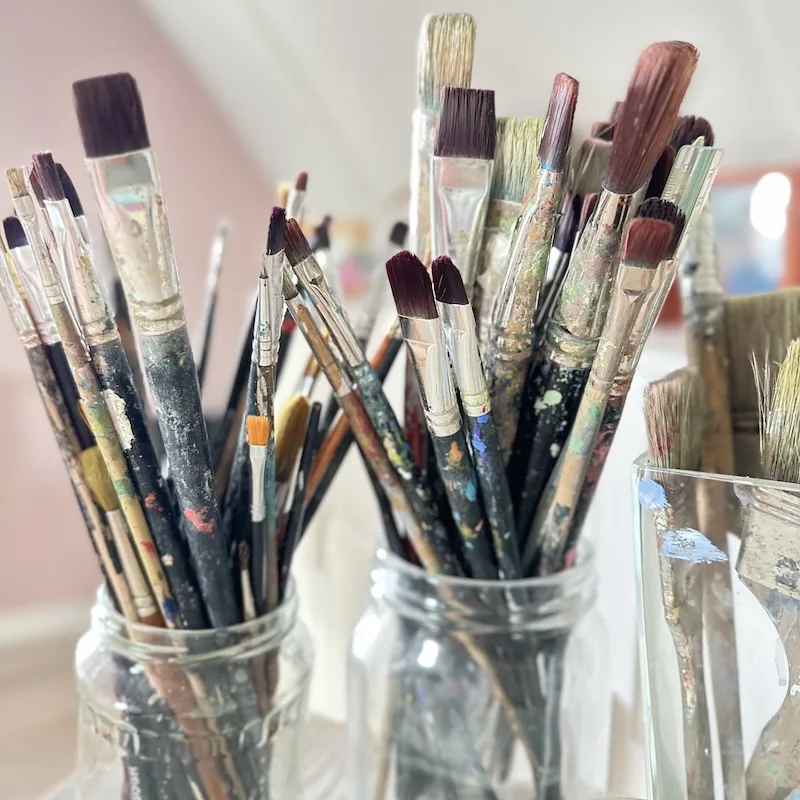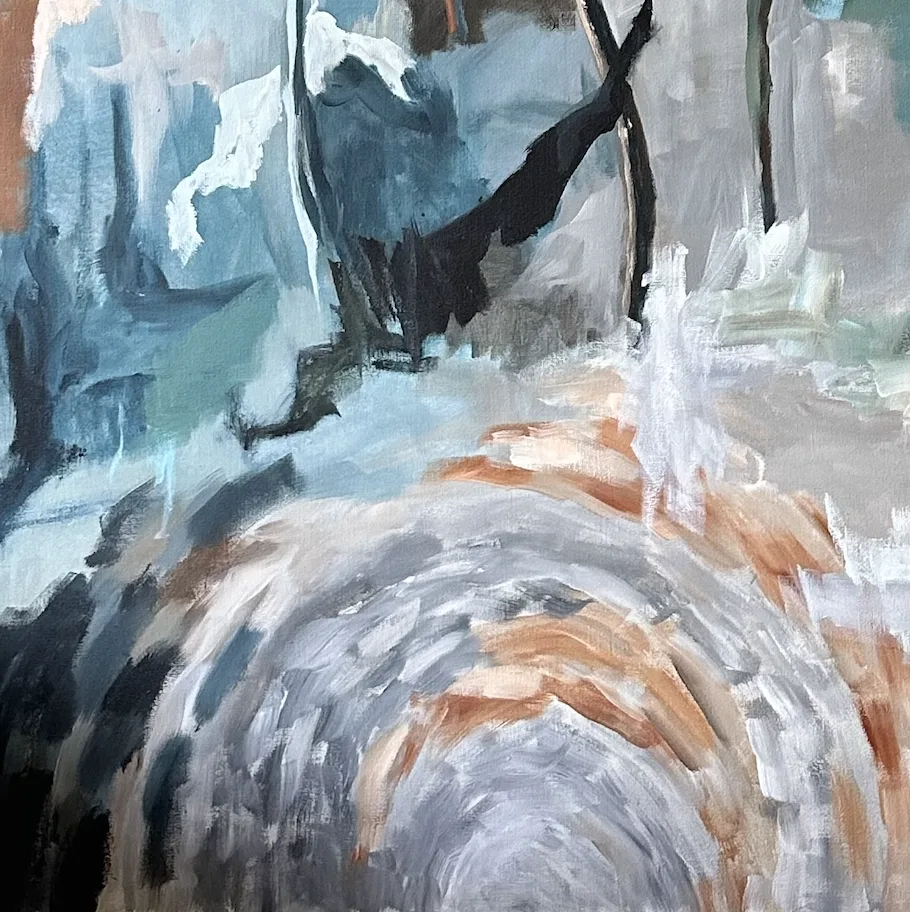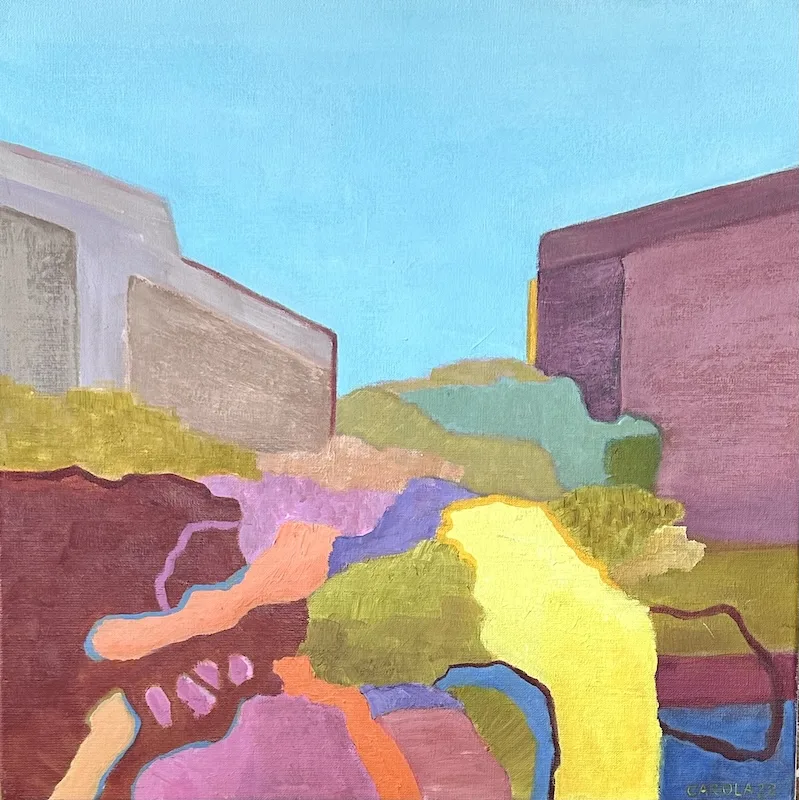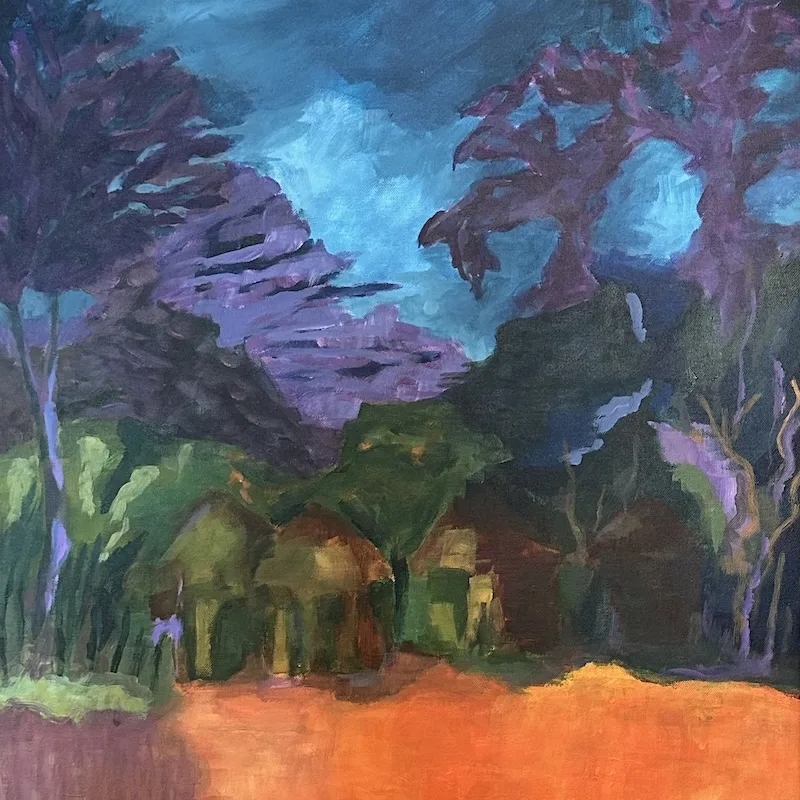
Speaking of brushes and pens for artists
March 2025
When you start painting, you will need a canvas and palette as well as brushes. Which brushes should you buy for the best result? Whether you are a hobby painter or an artist, in this PainterWiki I will explain which brushes you need for which paint, what the effect of using these brushes is and what types there are. I will also give you useful tips for maintaining your brushes so that you can use them for as long as possible.
What is the difference between a brush and pen?
In The Netherlands we sometimes use the word brush, sometimes pen, what is the difference? Pens are used by artists to apply different types of paint. A brush pen is made of soft hair such as marten hair. A paintbrush is usually larger and made of pig hair.
How do you choose the right brush or pen?
Before you choose a brush or brush, it is important to first ask yourself the following:
- What type of paint are you going to work with? Is it watercolor, gouache, acrylic paint or oil paint?
- And what painting technique do you want to achieve: if you work in a refined way, you need fine brushes, for background layers and structure you work with wider brushes.
- Think about the effect you want to achieve with a brush? For a rough surface, it is better to work with brushes or brushes with stiff hairs.
- Also look at the handle: which one fits best in your hand and what length do you like?
Types of brushes and pens
Let’s first discuss the types of brushes. A brush consists of three parts: the hairs, the sleeve of metal in which the hairs are held and the part that the painter holds: the handle, usually made of wood. Brushes come in various shapes, sizes and materials. Below is a description of the most commonly used models:
Round brushes
Round brushes are ideal if you want to work in detail, such as setting fine lines and contours. You can also reach every corner with them. These brushes are used by artists who work with watercolors, acrylics, and oils. For round brushes, the longer the point, the more precise and controlled you can paint.
Flat brushes
There are also brushes where the hairs are flattened in the sleeve of the brush. These brushes are perfect for making a broad stroke, drawing lines and painting large surfaces. Acrylic and oil painters like to paint with flat brushes.
Fan brushes
The name says it all: with a fan brush, the hairs are placed in the sleeve of the brush like a fan. These brushes are great for softly fanning out different colours of paint, for painting a cloud cover, grass or hair. But a fan brush is also nice if you want to let colours blend into each other or for creating splashes on your canvas. Fan brushes are suitable for dry and wet painting techniques.
Oval brushes
An oval brush (or Filbert) is a combination of a round and flat brush with rounded hair tips. This type of brush is good for painting soft transitions and flowing contours, such as leaves of plants and flowers, portraits or landscapes. But you can also use it to create beautiful, loose strokes. If you prefer a straight stroke, choose a flat brush.
Liner or slider brushes
If you like to paint fine details or want to create calligraphic lines (also think about signing your name on the canvas!), a liner brush is ideal. These round brushes have long hairs and work best with thin to medium thin paint.
Angled brushes
Angled brushes are flat but also have an angled end to the hair part. With these brushes you can make both broad and narrow strokes or paint fine lines. An ideal brush if you want to work tightly and precisely or expressively.
Hake brush
You can’t ignore a hake brush when painting large surfaces. This broad, flat brush is often used for the initial setup of your painting. There are spalters with long and short hairs for a different effect. A spalter is also usually used for varnishing your painting.
Which hairs do you prefer?
The hair part of the brush has a great influence on the technique and the effect of your painting. If you like to paint large surfaces with thicker types of paint, then brushes made of pig hair are ideal. Pig hairs absorb the paint well and you get more texture in the paint than with brushes with soft hairs.
Brushes with soft hairs are often made from the hairs of martens, squirrels or polecats. These hair types provide a smooth brush stroke and you can work with them in a refined and smooth way. Do you prefer an animal-friendly brush or brush? Then choose brushes and brushes with synthetic hair types. These are often more sustainable and cheaper than brushes with natural hair types.
Brushes for watercolour and ink
Watercolourists like to work with brushes where the hairs can absorb a lot of watercolour and where the hairs remain in a nice point. This allows them to work precisely and also create areas of colour. Round brushes with a short handle and soft (squirrel) hairs are the most suitable for this. Harder pressure produces broader strokes, light pressure produces beautiful thin lines. In addition to brushes with animal hairs, good brushes with synthetic hairs are now also available.
Brushes for oil paint and acrylic paint
For oil paint and acrylic paint painters, there are flat brushes available with a slightly firmer hair section. These can be natural or synthetic hairs. Most painters usually have flat brushes in different sizes in their brush holders and these brushes can be made of animal hairs or synthetic hairs made of nylon or polyester fibres. For coarse, expressive techniques, you use wide brushes, while precise details require smaller and softer brush strokes.
Which size do you choose?
The size of your brush says something about the thickness. Usually the diameter is in mm on the brush, but this can vary per manufacturer. There are brushes from 000 mm to 20 mm thick.
How to clean your brushes properly?
Finished painting? Then don’t forget to clean your brushes properly so you can enjoy them for as long as possible. Here are some tips on how to do this best: Rinse your brushes immediately with handwarm water and mild soap. Never use synthetic soaps. Put some soap and water in the palm of your hand and make circular movements with the hair part of your brushes in your palm. Then rinse your brushes with warm water and repeat the washing if necessary until the water is clear. Then lay your brush flat to dry. To ensure that the hairs stay nicely together, I have this tip for you that I once received: shape the hairs with a little spit and let dry. Maybe a bit dirty but it really helps! First clean oil paint brushes with odorless turpentine and then treat them with water and soap as described above.
Never do this with your brushes
Never leave your brushes in water or turpentine for too long! I speak from experience; I accidentally forgot to rinse my brushes once. Usually the hairs get bent but in my case the wood was affected and there was movement between the sleeve and the wooden handle, which makes painting difficult… Another tip: if you paint with oil and acrylic, use different brushes and brushes for each type of paint.
Trying out
If you are going to start painting, choose a few different brushes and brushes to try out. Over time, you will notice which brushes you like to work with the most and which effects you can achieve with them. Then you can expand these favorite brushes with different thicknesses.
Text and image: Carola Siksma-Ruiters
Read more PaintingWiki articles
Photo types of brushes: Vanbeekart.nl




